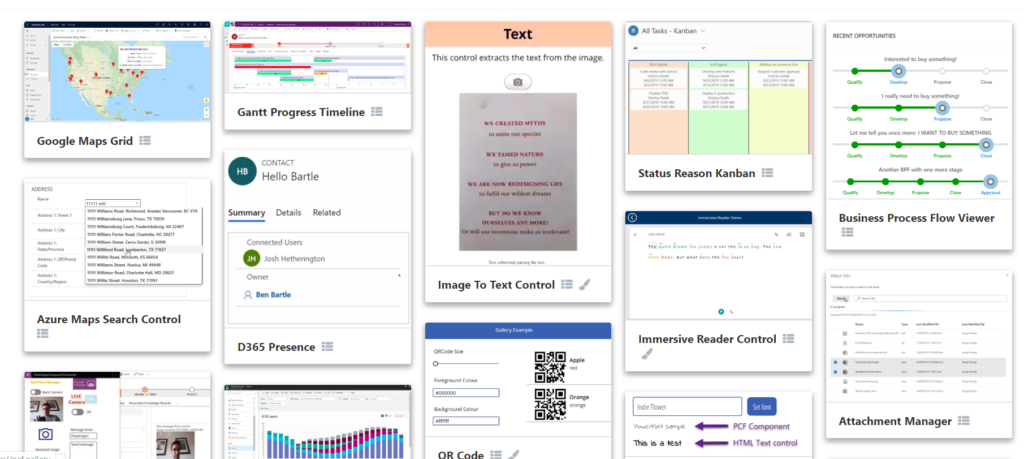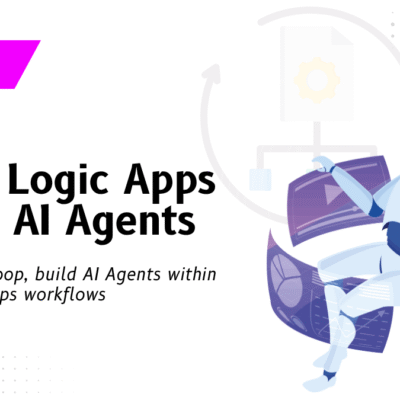Customizing Dynamics and Power Platform with PowerApps Component Framework (PCF)

The Power Platform is a collection of tools from Microsoft that enables business users to create custom applications, automate workflows, and analyze data without requiring extensive coding skills. One of the key components of the Power Platform is the Power Apps Component framework (PCF), which allows developers to create custom controls that can be used in Power Apps, Dynamics 365, and other Power Platform applications.
What is the PCF Component?
- The PCF component is a powerful tool that enables developers to unleash their creativity and design custom controls that suit their needs and preferences. These controls can be integrated with Power Apps, Dynamics 365, and other Power Platform applications to enhance their functionality and user experience.
- The PCF framework is based on web standards such as HTML, CSS, and JavaScript, making it easy for developers to create controls using the tools and technologies they are already familiar with.
- Components needed to work with PCF node.js, Visual studio, Power platform CLI.
How does it work?
- The PCF component works by providing a set of APIs that allow developers to create custom controls that can be used in Microsoft Business Applications. These APIs include methods for rendering control, handling events, and accessing data.
- Developers can create controls using popular web development tools such as Visual Studio Code, and then package them as a solution that can be imported into Power Apps, Dynamics 365, or other Power Platform applications.
- Once a control has been created and added to an application, it can be used just like any other control in the application, allowing users to interact with it and access its functionality.
How can it be used to create custom solutions?
- The PCF component can be used to create a wide range of custom controls, including input controls, display controls, and complex controls that incorporate multiple elements.
- To create a custom control using the PCF framework, developers first define the control’s user interface using HTML and CSS. They then define the control’s behavior using JavaScript, including how it responds to user input and how it accesses and manipulates data.
- Once the control has been defined, it can be tested using the PCF Playground, a web-based tool that allows developers to test and debug their controls before packaging them for use in Power Apps, Dynamics 365, or other Power Platform applications or XRM toolbox.
- Below is an example of various customizations developed using PCF controls.

Benefits of PCF Components in PowerApps:
- Customization: PCF components allow developers to create custom components that meet specific business requirements. This allows users to have a more personalized experience with Power Apps. For example, a business may require a custom component that displays specific data or allows for specific user interactions. With PCF components, developers can create these components and add them to their apps, providing a tailored solution that meets specific business needs.
- Reusability: PCF components can be reused across multiple applications, making development faster and more efficient. Instead of building custom components for each application, developers can create a library of PCF components that can be used across multiple applications. This not only saves time but also ensures consistency across applications, improving the overall user experience.
- Flexibility: PCF components offer flexibility in the types of applications that can be created. PCF components can be added to any canvas app or model-driven app, providing flexibility in the types of applications that can be created. Canvas apps are designed for creating custom user interfaces, while model-driven apps are designed for creating structured data entry forms. With PCF components, developers can create custom components for both types of applications, providing a flexible solution that can cater to a wide range of business requirements.
- Seamless Integration: PCF components can be integrated with other Microsoft technologies like Azure, Power Automate, and Dynamics 365, making it easier to build end-to-end solutions. This means that businesses can use PCF components to create custom solutions that integrate with other Microsoft technologies, improving the overall efficiency of their operations. For example, a business may use a PCF component to display data from Dynamics 365, while also using Power Automate to automate specific processes.
Conclusion:
- PCF components in Power Apps offer many benefits to business, including customization, reusability, flexibility, and seamless integration. These benefits allow businesses to create custom solutions that meet specific business requirements, while also improving the overall efficiency of their operations.
- To start using PCF components, business can browse the PCF Gallery to find a component that meets their requirement, download the solution file, import it into Power Apps, and add it to their app.
- Overall, PCF components in Power Apps provide a powerful toolset for business to create custom solutions that can improve their operations, increase efficiency, and enhance the user experience.
***Image Credits and Reference: www.microsoft.com


